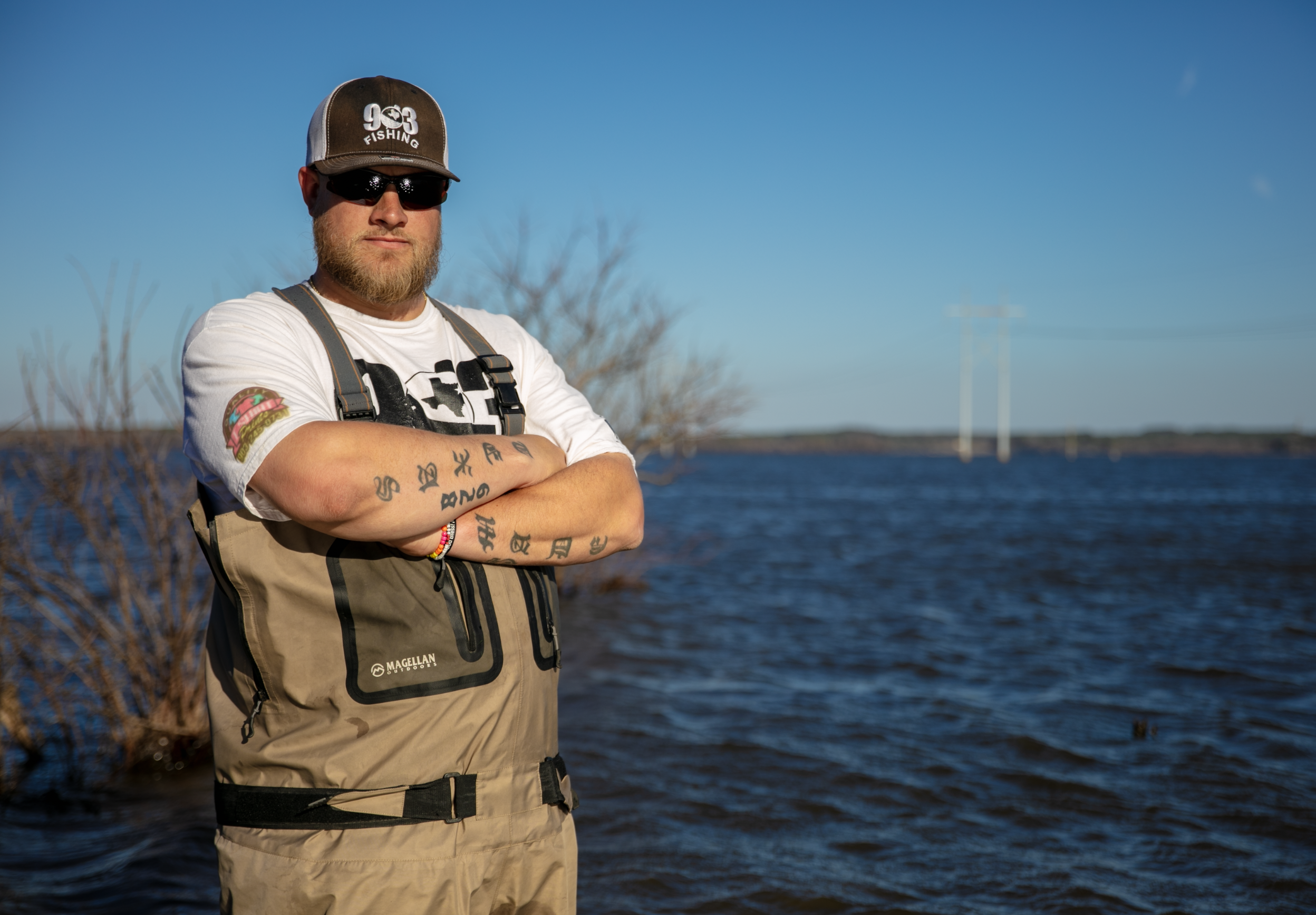by James Niggemeyer Professional Angler
The cool, crisp, bright mornings with mist or fog coming off the water in the winter months are such a beautiful time of year to be fishing for bass, though not many people really see it that way.
Though this period typically begins the coldest water temperatures of the year, it can still be an enjoyable time to be on the water. I’ve always enjoyed this time of year because there aren’t as many anglers on the water and it seems like you have the whole lake to yourself. Jokingly, it’s been said that anglers trade their rods in for rifles in the fall. Until five years ago, I spent most days on the water and not in the woods, but with my son’s increasing interest in hunting, I have split my available time between the two.
The productive fishing techniques can vary between the pace at which true winter water temperatures arrive for the southern parts of the country. While there are various ways to catch bass during this period, I have always enjoyed pursuing wolf pack bass that hunt the shallows in search of baitfish before they move out to deeper water. Once the water temperature gets into the 50’s, that plan can taper off so I have a two-prong plan that I utilize based on water temperatures and the most current weather trends and conditions.
The first can be a lot of fun if you enjoy fishing shallow moving baits, and really, most anglers probably do. Chrome, gold, shad, or baitfish patterned 1/4 to 1/2 oz Bill Lewis Rattle Traps, square bill crankbaits, spinnerbaits, and vibrating jigs are what I mainly have tied on to imitate threadfin shad, minnows, or shiners schooled up in the shallower portions of the bays, creeks, and tributaries. Bass have a tendency to be focused on what is at their level or above them and respond better to horizontal moving baits like these that ride higher in the water column similar to the baitfish they pursue.
Covering a lot of water in search of these activity zones is a must as fish are not evenly distributed throughout, but are more likely to be relating to specific sections of the waterbody you are fishing.
This may not necessarily mean moving baits at a fast rate of speed, but actually moving your boat through areas with your trolling motor, or trying multiple areas in order to find productive zones. Places where deeper water runs closest to the bank in the form of creek channels, ditches, or steeper banks are high percentage locations that should be visited. I keep a close watch for baitfish activity both visually and electronically because this will notify me where I should begin getting bit with a greater degree of frequency. Whenever I identify baitfish presence, I will immediately look for cover like docks, brush, grass, rocks, or wood where bass can set up to ambush prey. Casting near or alongside these targets, and sometimes even running your baits into the cover or in the shade they produce, is important for greater success.
Now, if winter moves in more rapidly or a big front comes through leaving colder temperatures, high pressure, and bright skies in its wake I will apply a more methodical approach. Bass and baitfish may have evacuated the shallower areas, so I will begin by looking for them to relate to creek channels, outside edges of deeper boat docks, and rock, which may be relatively close to where they were before these changes happened. Hard cover seems to be more important at this time and bass will likely position on them through the winter and into the spring. These bass will most likely not move far to chase a prey item, so fishing baits low and slow can be a must to increase the number of bites you will get. Creek channels are good locations because they have drop-offs or a vertical nature close by that bass will use throughout the winter. Banks or terrain with a steeper slope will also be a good place as bass can adjust their depth in the water column and not have to travel too far.
For me, I LOVE to fish a 3/8 oz or ½ oz jig slow, tight to cover, and on the bottom. The Buckeye Ballin’ Out Jig with a Yamamoto Flapping Hog trailer is a great choice that will work in a variety of water clarities and cover types. I keep my color selection super simple by using Green Pumpkin in clearer water and black and blue in more stained water. On windy days, I may go up to a 3/4oz jig to maintain maximum feel and bottom contact.
I always try to present my jig on a slack line so it will fall vertically near cover or on the targeted structure where you believe bass are situated. This often-overlooked detail can make a large difference in the number of bites you get during the day. Try to vary the retrieve from dragging the jig across the bottom to subtle hops or bumps with the rod tip. Fishing a jig in this manner is something that will typically produce all the way into the pre-spawn period. You may not get many bites, but the ones you do get will be memorable.
About the author: James Niggemeyer has been a full-time professional angler since 2006. He is a 3 time Bassmaster Classic qualifier, 3 time Bassmaster tournament winner, and fishing guide on multiple East Texas lakes where he resides.










